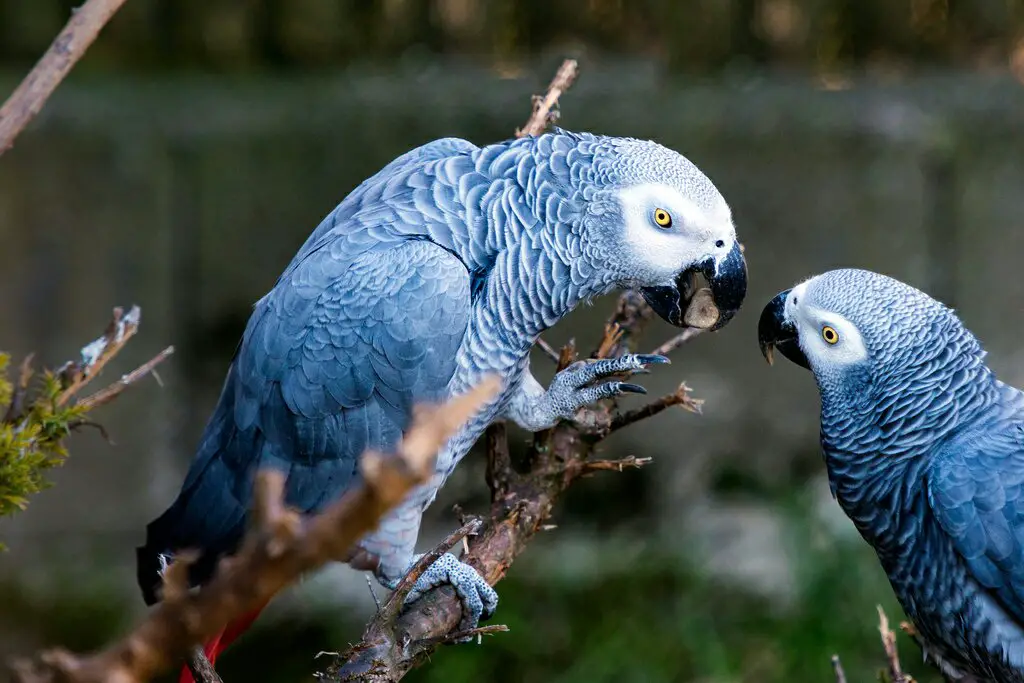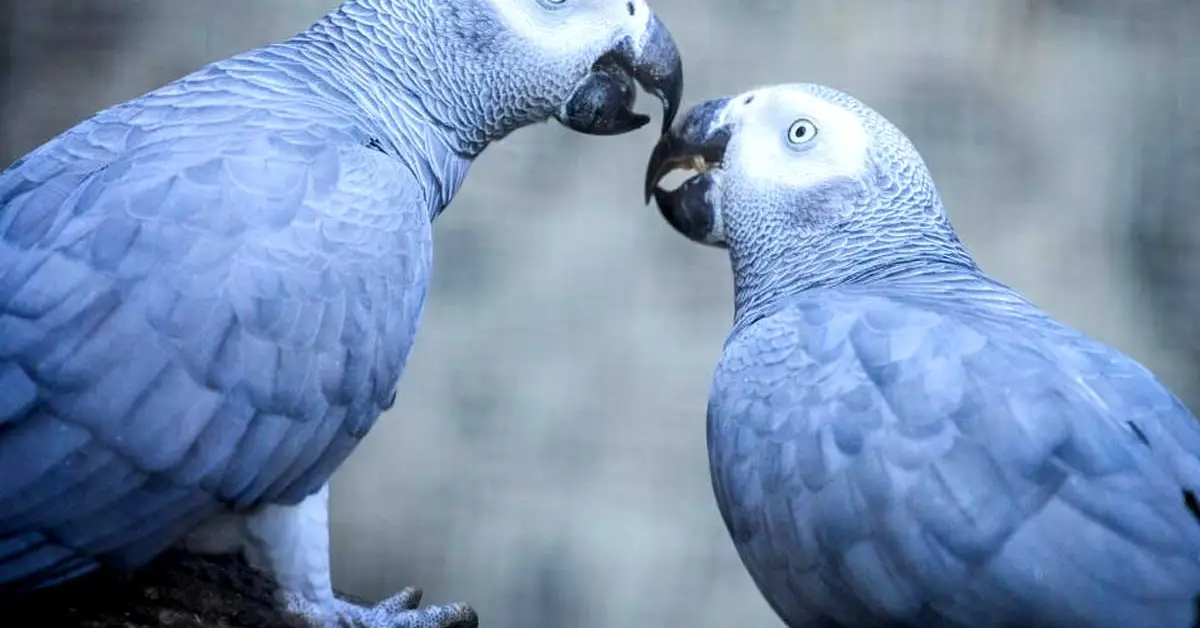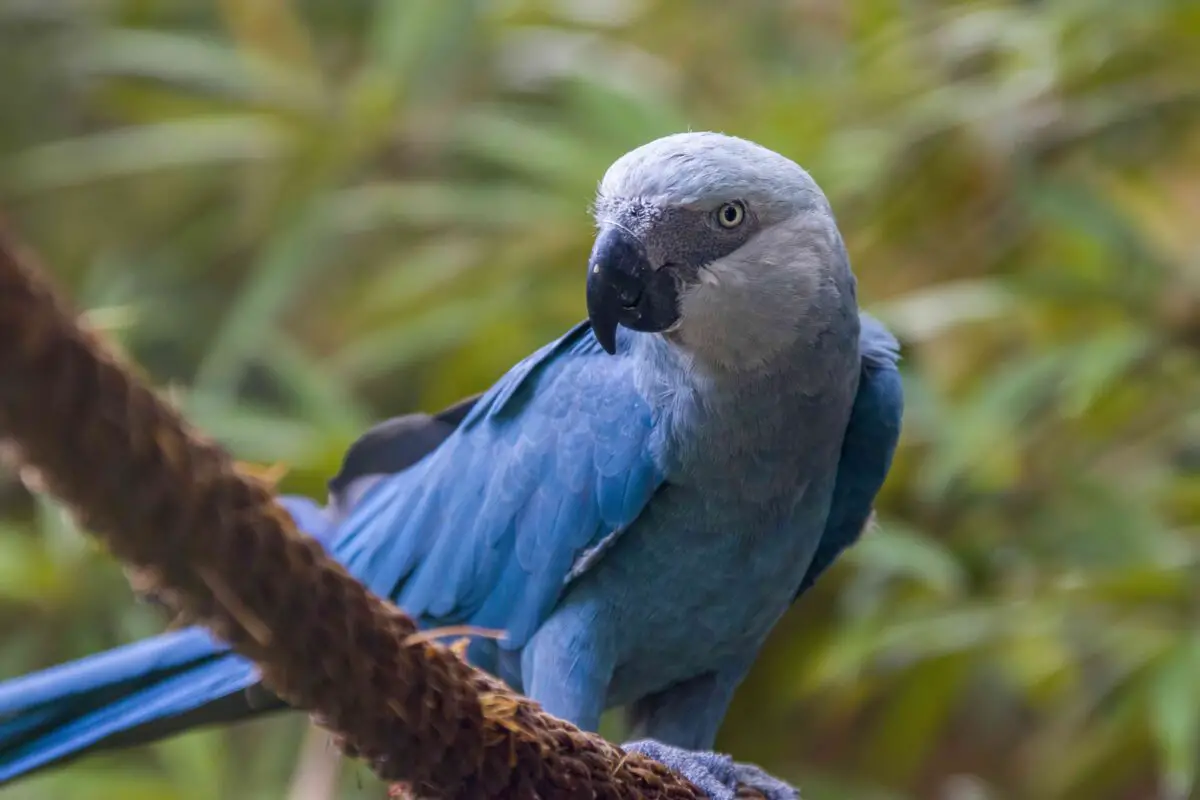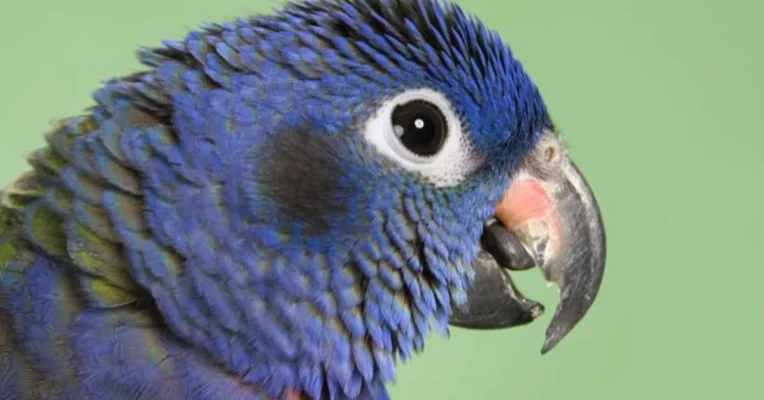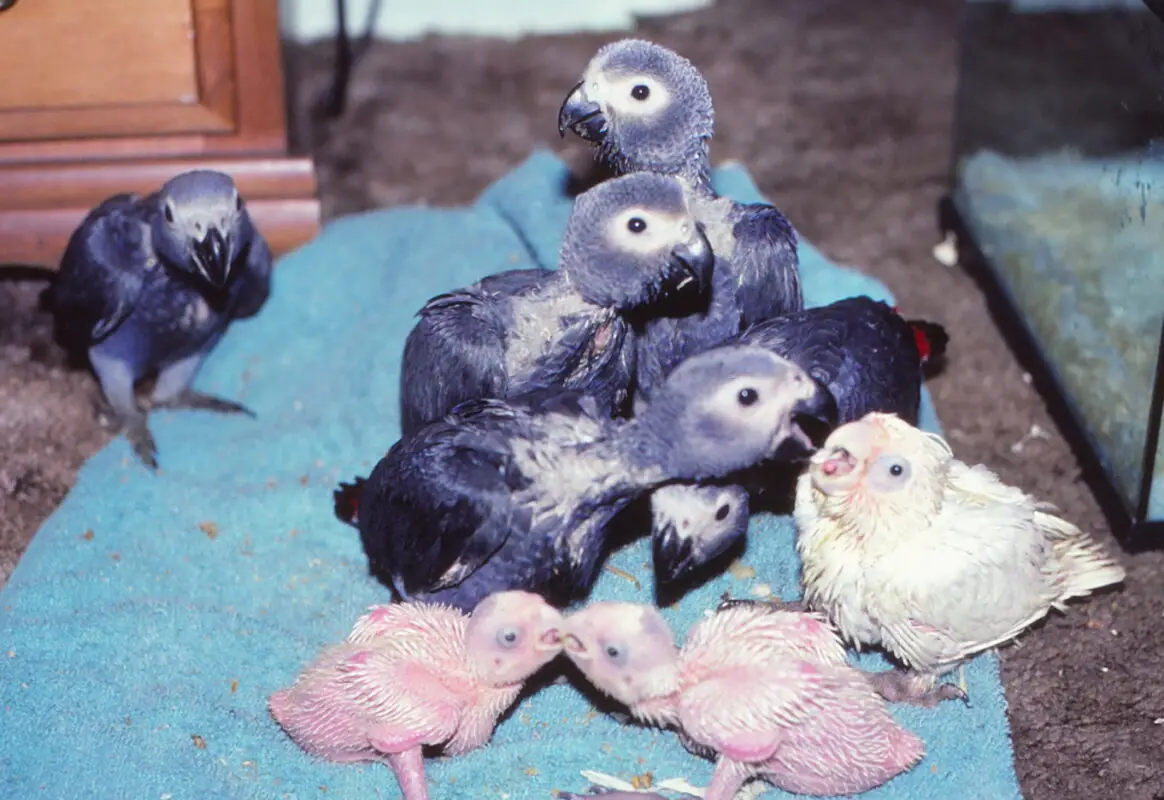Blogs, Species Guides
Discover Blue African Grey Parrots: Rarity & Charm
Discover Blue African Grey Parrots: Rarity & Charm
“In the presence of nature, a wild delight runs through the man, in spite of real sorrows.” – Ralph Waldo Emerson
Welcome to the world of blue African grey parrots, where beauty and rarity intertwine to create a truly mesmerizing avian wonder. These captivating creatures have long been revered and sought after for their stunning blue coloration and unique charm. In this article, we will delve into the mystique of the blue African grey parrot, uncovering fascinating information about their appearance, characteristics, care needs, habitat, breeding, and health.
Key Takeaways:
- Blue African grey parrots are a rare and captivating avian species, known for their striking blue coloration and distinct charm.
- Understanding the appearance and characteristics of these birds is essential to appreciate their beauty and unique behaviors.
- Proper care, including a well-balanced diet and a stimulating environment, is crucial for the health and well-being of blue African grey parrots.
- These parrots have specific habitat requirements and adaptations that allow them to thrive in their natural environment.
- Knowing about their average lifespan, common health issues, and how to provide preventative care is essential for every blue African grey parrot owner.
Blue African Grey Parrot: Appearance and Characteristics
The blue African grey parrot is renowned for its striking appearance, captivating both bird enthusiasts and casual observers alike. With its vibrant blue coloration and unique physical traits, these birds stand out in the avian world.
Blue Coloration:
The blue African grey parrot’s stunning blue feathers are a result of a genetic mutation. Unlike their more common grey counterparts, blue African grey parrots have a rare and mesmerizing blue plumage, which sets them apart from other parrot species. This unusual coloration adds to their allure, making them a highly sought-after pet for bird enthusiasts.
Distinct Physical Traits:
In addition to their captivating blue color, blue African grey parrots possess distinct physical traits that contribute to their charm. These parrots have a robust and medium-sized body, with a wingspan averaging around 18 to 20 inches (45 to 50 cm). Their beak is strong and designed for cracking nuts and seeds, which form a significant part of their diet.
Another unique feature of blue African grey parrots is their expressive eyes, which are known for their keen intelligence. The eyes of these parrots have a soulful appearance and can convey a wide range of emotions, from curiosity to affection.
Behavior:
Blue African grey parrots are highly intelligent and social creatures. They are known for their exceptional ability to mimic human speech, making them a popular choice for those seeking a talking parrot companion. These birds thrive on mental stimulation and require regular interaction and enrichment activities to maintain their well-being.
Blue African grey parrots possess a curious and playful nature. They enjoy exploring their surroundings, observing their environment, and engaging in problem-solving activities. Providing them with toys, puzzles, and interactive games can help keep their minds sharp and prevent boredom.
In addition, blue African grey parrots are known for their gentle and affectionate personalities. They form strong bonds with their human caregivers and enjoy spending time interacting with them. These parrots crave attention and thrive in environments where they receive love and social interaction.
| Physical Characteristics | Behavior |
|---|---|
| Medium-sized body | Highly intelligent |
| Blue plumage | Excellent mimickers |
| Expressive eyes | Curious and playful |
| Strong beak | Affectionate and social |
Blue African Grey Parrot Care Guide
Providing optimal care for your blue African grey parrot is essential to ensure its overall health and well-being. Understanding their dietary needs, providing suitable housing, and engaging enrichment activities are key factors in maintaining their happiness. Here are some valuable insights to help you create a safe and nurturing environment for these extraordinary birds.
Dietary Needs
Proper nutrition is crucial for the health of your blue African grey parrot. Their diet should consist of a variety of fresh fruits, vegetables, nuts, seeds, and pellet mixes specifically formulated for parrots. African grey parrots are prone to obesity, so it’s important to monitor their food intake and limit high-fat foods. Offer a balanced diet and ensure access to fresh water at all times.
Suitable Housing
Adequate housing is essential for the well-being of your blue African grey parrot. These intelligent birds require spacious cages to provide room for movement and exercise. The cage should be equipped with perches of varying sizes to promote foot health. Additionally, provide toys and mentally stimulating activities to prevent boredom and promote active engagement.
Enrichment Activities
Engaging your blue African grey parrot in enrichment activities is crucial for their mental stimulation and overall happiness. They are highly intelligent and need intellectual challenges. Provide puzzle toys, foraging opportunities, and interactive games to keep their minds active. Regular social interaction and training sessions will also contribute to their well-rounded development.
“Parrots, like the blue African grey parrot, thrive in environments that simulate their natural surroundings. It’s vital to recreate a diverse and stimulating atmosphere to ensure their emotional and intellectual needs are met.” – Dr. Jane Peterson, Avian Specialist
| Aspect | Guidelines |
|---|---|
| Diet | Offer a balanced mix of fresh fruits, vegetables, nuts, seeds, and pellets |
| Housing | Provide a spacious cage with perches and mentally stimulating toys |
| Enrichment | Engage in interactive activities, games, and socialization |
| Healthcare | Schedule regular veterinary check-ups and monitor their body condition |
By following these care guidelines, you can ensure that your blue African grey parrot thrives in a nurturing environment that cater to their complex needs. Remember to spend quality time with them, provide specialized care, and foster a strong bond for years of companionship.
Blue African Grey Parrot Habitat and Adaptations
Exploring the natural habitat and unique adaptations of the blue African grey parrot allows us to gain a deeper understanding of this remarkable species. These birds are native to the lush forests of West and Central Africa, specifically in countries such as Congo, Cameroon, and Ghana.
The blue African grey parrots are highly adaptable and can thrive in various forest types, including both primary and secondary forests. They are known to inhabit dense rainforests, deciduous forests, and even mangroves along coastal regions. This versatility in habitat preferences is a testament to their ability to adapt and survive in diverse environments.
One remarkable adaptation of the blue African grey parrot is its exceptional intelligence. These birds possess incredible cognitive abilities and are among the most intelligent of all parrot species. Their keen problem-solving skills and advanced vocalizations allow them to navigate and communicate effectively within their habitat.
Another noteworthy adaptation of these parrots is their strong beaks and sharp claws. These physical features enable them to manipulate objects and extract seeds, fruits, and nuts from various tree species found in their habitat. Their beak strength and dexterity are also useful for building nests in tree cavities or using existing holes.
To further illustrate the adaptability of the blue African grey parrot, take a look at the table below:
| Adaptations | Explanation |
|---|---|
| Feather Coloration | Their gray feathers with blue shades provide excellent camouflage against the leafy canopy of the forest, helping them blend in with their surroundings and avoid predators. |
| Excellent Mimicry | Blue African grey parrots have an exceptional ability to mimic various sounds, including human speech, which serves as a means of communication and bonding with their flock. |
| Powerful Flight | These parrots have strong wings and are capable of flying long distances, allowing them to explore different areas within their habitat in search of food and suitable nesting sites. |
| Ability to Extract Nutrients | The powerful beak of the blue African grey parrot enables them to crack open the tough shells of nuts and seeds, accessing the valuable nutrients inside. |
It is fascinating to observe how the blue African grey parrot’s habitat and adaptations have shaped their survival strategies and unique characteristics. Their ability to thrive in diverse forest environments is a testament to their resilience and adaptability as a species.
Blue African Grey Parrot Lifespan and Health
When considering a blue African grey parrot as a pet, it is essential to understand their expected lifespan and prioritize their overall health and well-being. By knowing the average lifespan of these magnificent birds and adopting proper care practices, you can ensure that they live long, happy lives.
The blue African grey parrot has a lifespan of approximately 40 to 60 years in captivity. With proper care, some individuals have been known to live even longer. These birds are known for their intelligence, playful nature, and the profound bond they develop with their human companions.
Adopting a proactive approach to their health is crucial in prolonging the lifespan of blue African grey parrots. Regular veterinary check-ups are essential to detect any potential health issues early on and seek appropriate treatment. A qualified avian veterinarian can conduct thorough examinations, including blood tests and avian-specific diagnostics, to evaluate the parrot’s overall health and well-being.
There are several common health issues that blue African grey parrots may encounter, and being aware of these can help you provide the best care possible. Some of these health concerns include:
- Psittacosis: Also known as parrot fever, this bacterial infection can cause respiratory issues and affect both the bird and humans.
- Feather plucking: A behavior exhibited by some parrots due to stress, illness, or boredom. It’s essential to create a stimulating environment and provide enrichment activities.
- Nutritional deficiencies: A well-balanced diet is crucial for the health and longevity of a blue African grey parrot. A diet rich in fresh fruits, vegetables, nuts, and high-quality pellets is recommended.
Providing a spacious enclosure with plenty of toys and perches for exercise and mental stimulation is essential for their well-being. Ensuring a stress-free environment and maintaining good hygiene practices are also vital for their overall health.
In conclusion, understanding the average lifespan of blue African grey parrots, prioritizing their health, and being knowledgeable about common health issues are all key factors in providing optimal care. By taking proactive measures and seeking professional veterinary care, you can ensure that your blue African grey parrot enjoys a happy and healthy life by your side.
Breeding Blue African Grey Parrots
Gaining insights into the intricacies of breeding blue African grey parrots can be a fascinating journey for avian enthusiasts. Breeding these magnificent birds requires careful consideration and knowledge of their specific needs.
1. Breeding Age
Blue African grey parrots typically reach sexual maturity between the ages of 3 and 6 years. It is important to wait until they have reached this breeding age before attempting to pair them for breeding purposes. Breeding too early may result in health complications for the birds and unsuccessful breeding attempts.
2. Mating Rituals
During the breeding season, blue African grey parrots engage in elaborate mating rituals. These rituals involve displaying vibrant plumage, performing intricate dances, and vocalizing to attract potential mates. Pairing compatible birds that demonstrate mutual interest is crucial for successful breeding.
3. Nesting Requirements
Providing suitable nesting options is essential for breeding blue African grey parrots. They require secure and spacious nesting boxes placed high within the aviary. The boxes should have a size of approximately 12 x 12 x 24 inches, allowing enough room for the breeding pair to comfortably maneuver inside.
4. Incubation and Hatching
Once the female blue African grey parrot lays her eggs, both parents take turns incubating them. The incubation period typically lasts for about 28 to 32 days. Once the eggs hatch, the parents diligently care for their offspring, providing warmth, protection, and nourishment.
5. Raising Healthy Offspring
Raising healthy offspring requires providing a balanced diet consisting of fresh fruits, vegetables, seeds, and pellets. Ensuring a hygienic environment, regular veterinary check-ups, and monitoring the chicks’ growth and development are vital for their well-being. It is essential to provide proper education and enrichment for the young birds to stimulate their cognitive and physical abilities.
Successful breeding of blue African grey parrots requires patience, knowledge, and dedication. Being well-informed about the breeding age, mating rituals, nesting requirements, and raising healthy offspring is crucial for a fulfilling breeding experience.
| Key Considerations for Breeding Blue African Grey Parrots | Do | Don’t |
|---|---|---|
| Provide a suitable nesting box | Choose a spacious nesting box | Use a nesting box with insufficient space |
| Pair compatible birds | Observe birds for mutual interest | Force incompatible pairs |
| Monitor breeding age | Wait until the birds reach sexual maturity | Attempt breeding too early |
| Provide a balanced diet | Offer fresh fruits, vegetables, seeds, and pellets | Rely solely on a single food source |
| Ensure a hygienic environment | Clean the aviary regularly | Neglect cleanliness and sanitation |
Conclusion
In conclusion, the blue African grey parrot has captured the fascination of bird enthusiasts around the world with its rarity and charm. These captivating birds are known for their striking blue coloration and distinctive characteristics, making them a truly unique species.
Providing optimal care for blue African grey parrots is essential to ensure their well-being. From a balanced diet to suitable housing and enrichment activities, it is important to create a safe and nurturing environment for these extraordinary birds.
Additionally, understanding the natural habitat and adaptations of blue African grey parrots allows us to appreciate their ability to thrive in the wild. Their average lifespan and health can be maintained through proper preventative care and regular vet check-ups.
Lastly, for those interested in breeding blue African grey parrots, it is crucial to consider the age, mating rituals, and nesting requirements to ensure successful reproduction and the raising of healthy offspring.
FAQ
Are blue African grey parrots a rare species?
Yes, blue African grey parrots are considered rare in the wild. Their blue coloration is a genetic mutation that occurs in a small percentage of the African grey parrot population.
What sets blue African grey parrots apart from other parrot species?
Blue African grey parrots stand out due to their unique blue coloration. Unlike the more common grey feathers of African grey parrots, the blue variety possesses a striking blue hue, making them highly sought after by avian enthusiasts.
Where can I find more information about blue African grey parrots?
For comprehensive information about blue African grey parrots, you can consult reputable avian websites, books, or reach out to experienced breeders and avian experts. They can provide insights into their care, behavior, and other relevant details.
What is the typical diet of blue African grey parrots?
Blue African grey parrots have similar dietary requirements to their grey counterparts. Their diet should consist of a variety of fresh fruits, vegetables, high-quality pellets, and a limited number of nuts or seeds. It’s essential to offer a balanced and nutritious diet to ensure their well-being.
How should I care for a blue African grey parrot?
Providing optimal care for a blue African grey parrot involves creating a suitable environment, offering a balanced diet, ensuring regular veterinary check-ups, engaging them in mental and physical stimulation, and providing social interaction. It’s crucial to provide a safe and nurturing space for their well-being.
What is the natural habitat of blue African grey parrots?
Blue African grey parrots are native to the dense rainforests of West and Central Africa. They inhabit tree canopies and rely on these habitats for their survival. These parrots have adapted to thrive in a lush and verdant environment.
How long do blue African grey parrots live?
Blue African grey parrots have a similar lifespan to their grey counterparts, which can range from 40 to 60 years or even longer with proper care. Providing a healthy diet, regular exercise, mental stimulation, and a stress-free environment can contribute to their longevity.
What should I know about breeding blue African grey parrots?
Breeding blue African grey parrots requires careful considerations. It’s crucial to ensure that both the male and female birds are mature and in excellent health before breeding. Providing appropriate nesting materials and creating a suitable environment that mimics their natural habitat is essential for successful breeding.

